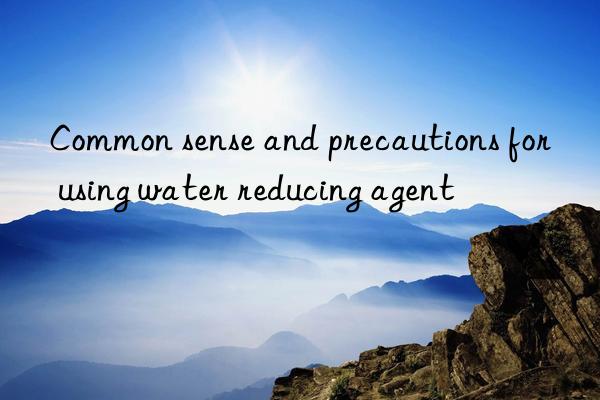
Water-reducing agent is a concrete additive that is widely used at present. It is light in color, odorless, and has a high water-reducing rate. It can effectively improve the performance of concrete. It is an environmentally friendly and efficient concrete water-reducing agent. Adding water-reducing agents to concrete makes the concrete more uniform and dense, improves a series of physical and chemical properties, such as impermeability, frost resistance, erosion resistance, etc., and improves the durability of concrete. However, even so, some common sense must be mastered when using water-reducing agents in order to better utilize the role of water-reducing agents.
Generally speaking, the performance of superplasticizer is sensitive to the fineness of cement, the mud content of sand and gravel, and the fineness of sand. Generally speaking, the finer the cement, the smaller the mud content of sand. The higher the value, the finer the sand, and the worse the performance of the water-reducing agent, so the indicators of the above raw materials must be strictly controlled. Generally speaking, the output is relatively low. If the slump of the concrete arriving at the construction site is too small, when it is necessary to add water-reducing agent on the construction site, it is generally not more than 5kg per vehicle, and the amount added per cubic meter should not exceed 2kg. standard.
In addition, once the water-reducing agent comes into contact with the human body or eyes, it must be washed with clean water as soon as possible. If there are adverse reactions such as allergies, it is necessary to go to the hospital in time. Provide treatment and ensure the safety of the use of water-reducing agents.
Precautions for the application of water-reducing agents:
1. Avoid contact between water-reducing agents and iron materials during storage. Because the superplasticizer product is acidic, it is likely to react once it comes into contact with iron.
2. During the preparation process, the amount of water-reducing agent and water consumption must be strictly controlled to avoid adverse phenomena such as segregation, bleeding, hardening, and increased gas content.
3. The secondary addition of water-reducing agent must also go through strict experiments. It must be tested during the operation, and blind addition is strictly prohibited.
4. It is necessary to strengthen the early maintenance of water-reducing agents to prevent cracking and other phenomena.
5. In order to prevent excessive air gaps or crystal cavities on the concrete surface due to the air-entraining effect of the water-reducing agent, the dosage of high-efficiency water-reducing agent should be reduced as much as possible while ensuring the working performance.
In short, in order to ensure the efficient performance of the water reducing agent, the above application precautions must be understood.
</p

 微信扫一扫打赏
微信扫一扫打赏

